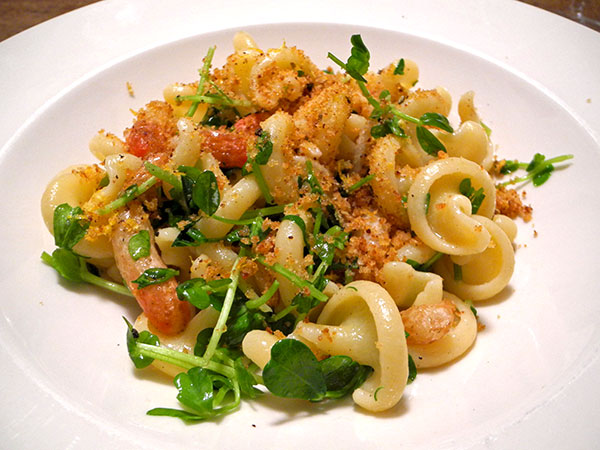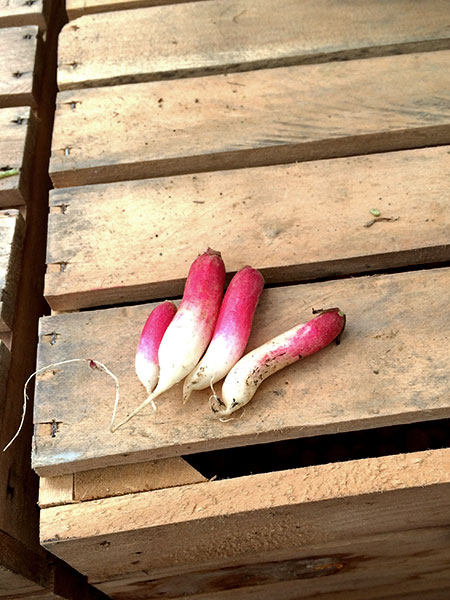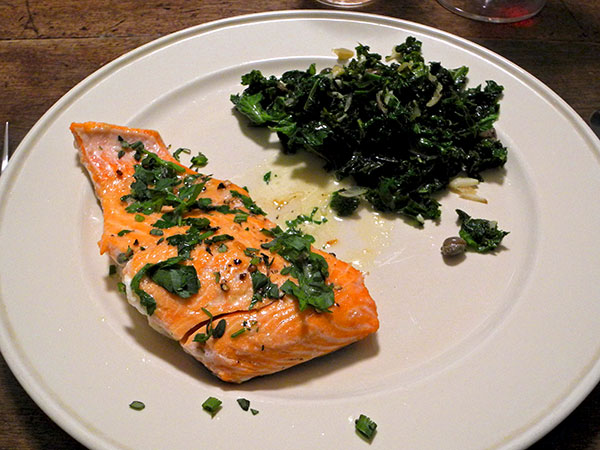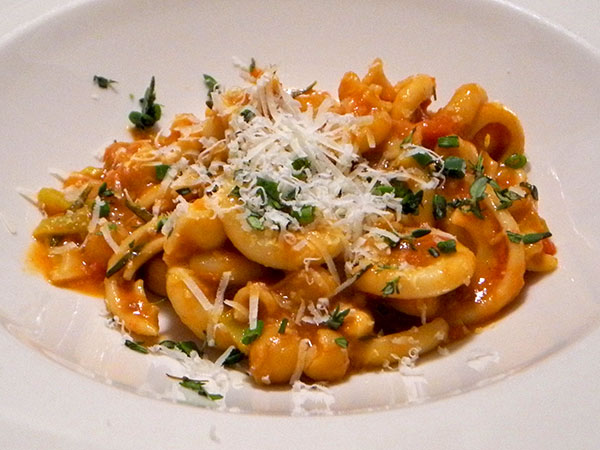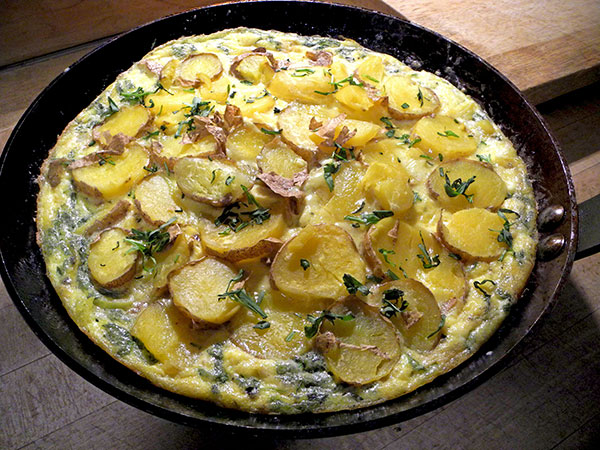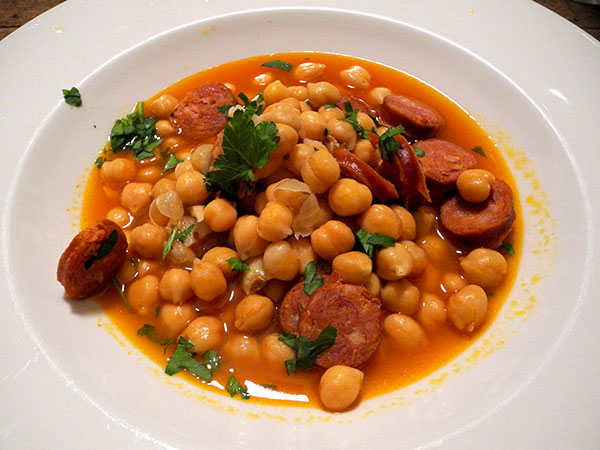I’ve assembled this dish once before. That will happen sometimes, even consciously. I remembered liking it a lot. It was as good last night as it was the first time; maybe even better, since there were no leftovers this time. We skipped a cheese course, to savor the pasta more.
It’s a rich-tasting primi or secondo, very Italian, and very simple to prepare. As I wrote the last time, the concept of cooking a dry pasta without a pot of water seems somewhat counterintuitive (I forgot the process myself this time, and had started boiling a large pot of water before I realized my mistake), but once you’ve gone through the process, it makes perfect sense.
- inside a large non-reactive pot, briefly sautéed in 3 tablespoons of olive oil, 2 medium cloves of chopped garlic from Keith’s Farm, 2 generously-sized rosemary sprigs from Stokes Farm, and 4 rinsed and filleted salted anchovies from Buon Italia, until the anchovies had broken up, then a 16-ounce can of San Marzano tomatoes (already-chopped or whole, and ideally without basil), with the juices, added and cooked for 10 or 15 minutes, crushing with a wooden spoon if the tomatoes are whole, salt added to taste, the heat increased and a can of good chick peas, with the liquid, poured in, along with about 2 cups of good chicken broth or water, and a third sprig of rosemary, everything brought to a soft boil before half a pound of dry Afeltra Pasta di Gragnolo ‘Vesuvio’ was added (alternatively, use some other small pasta, like farfalle or a small penne or rigatoni), the heat now reduced to a healthy simmer until the pasta was cooked al dente and the broth thick, stirring frequently (this may take half an hour), adding more liquid if necessary, spooning it into bowls, drizzled with a little olive oil, and sprinkled with good grated Parmesan cheese from Buon Italia [the basic recipe for the pasta comes from food52.com, but I have annotated it here, mostly to reflect my own experience]
- the wine was a very interesting Italian (Piedmont) red, La Casaccia Monfiorenza Freisa 2012 [NOTE: appellation now only shows the 2014 on its site], which was entirely new to us
- the music was by David Matthews, “September Music” and “Symphony No.4”, from this 1991 album, streaming on Spotify; later, lingering at the table, we listened to an absolutely beautiful new (2016) piece, ‘Let Me Tell You’, by Hans Abrahamsen, sung with incredible intensity and brilliance by the amazing soprano Barbara Hannigan (here, talking about the piece with the composer and Paul Griffiths, the author of the text)

